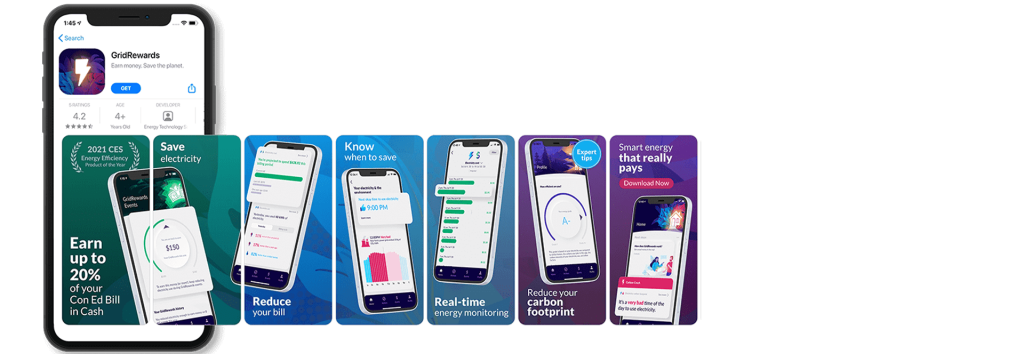
The app stores are crowded places. With over six million apps available, it’s more important than ever to have an app store optimization (ASO) strategy in place. It’s the key to getting more downloads and achieving success in the app marketplace.
ASO helps ensure that your app ranks higher in search results, so potential users can find it easily. By optimizing your app for both Apple’s App Store and Google Play, you will position yourself to reach a larger audience of potential customers.
This blog post will provide an overview of essential ASO strategies and tips on how to maximize visibility and improve your app’s retention rate.. We’ll cover everything from choosing the right keywords to creating effective screenshots and videos that draw attention – all with the goal of making sure your app stands out among its competitors. So let’s have a look at some practical steps you can take today to optimize your listing on the app stores.

What is App Store Optimization (ASO)?
App Store Optimization, also known as ASO, is a key digital marketing practice for mobile apps. It involves using various techniques and optimizations to help an app reach its highest potential in terms of visibility, engagement, and downloads from app stores such as Apple App Store and Google Play Store. When done successfully, ASO allows an app to appear higher in the app store search results for relevant queries, making it more likely for users to discover and download that app.
As both the Apple App Store and Google Play Store continue to grow in terms of the number of apps they offer and downloads that occur each day, the question of “how to do app store optimization?” is becoming increasingly important for any mobile app developer or marketer.
App store optimization includes optimizing various elements of an app such as its description, title, screenshots, target keywords, ratings, reviews, and more. Marketers must focus both on how their app appears in the app store listing page as well as how they can ensure their target audience finds their app listing through organic search. Understanding how users interact with an app before and after downloading it will inform how a marketer optimizes it further. When done properly, these tactics will have a positive effect on how an app performs.

Need help with your ASO strategy?
Our dedicated team of ASO experts are on hand to help.
The Benefits of an ASO Strategy
ASO is essential for ensuring a successful mobile app launch. Through the use of an ASO strategy, you can effectively increase your overall visibility in the respective app stores and improve user acquisition.
With careful research and analysis of relevant data points, your ASO strategy can be tailored specifically to your app to boost exposure as much as possible.
ASO ensures that users are able to discover apps at the exact moment they are searching for them in the App Store — improved organic discoverability — which leads to more organic downloads. The more organic downloads your app receives, the more tangible benefits will come its way, such as recognition of your app as an industry leader in your vertical.
Leveraging an effective ASO strategy can bolster your exposure by refining the keywords you use in your app name/ title, descriptions, and more. Ultimately, as more users are exposed to your app and it is seen as more often as a featured title, your potential for success in the mobile world only increases exponentially.
Developing an ASO strategy also allows you to target specific markets and demographics, as well as receive detailed analytics that can inform all future planning. You can gain access to powerful insights about user behavior and preferences, enabling you to better understand your target market and optimize your app for greater success.
App store optimization requires constant updates to be successful, but it will allow you to get the best results for your app. It’s clear to see the importance of having an effective ASO strategy in the modern mobile ecosystem.
How to Build an App Store Optimization Strategy
Building an ASO strategy can seem daunting, but when done properly it is one of the foundations of a successful mobile app launch. How you plan this strategy can make or break its success, so it’s important to take the time to research and develop a process that works for your brand. How do you plan an ASO strategy? Let’s dive in.
1. Define and Understand Your Target Users
First and foremost, it’s vital to understand who your target users are and what they are searching for. You can’t move onto the next steps without this knowledge.

2. Conduct a Competitor Analysis
Next, you can identify your main competitors and research their app and app store page to help you know what to do and what not to do yourself. What are they getting right? What are they getting wrong? All will be revealed through a competitor analysis.
This will give you crucial insights into what keywords they’re using that you should also try and compete for, what style they’re choosing for their screenshots that may be indicative of what your users respond well to, and more.
3. Create a Keyword Strategy
Now you know who your target users are, what they’re searching for, and what keywords your competitors are targeting, you can conduct keyword research on a tool like AppTweak and combine all of the information to build a keyword strategy.
One particular ASO keyword strategy is to choose keywords with high search volumes but low competition.
Your ASO keyword strategy will determine which keywords you target throughout your app metadata in the hopes of appearing at the top of the app store results page for that query.

4. Optimize Your Metadata
Your app metadata should be optimized by incorporating the relevant keywords from your keyword strategy, as well as ensuring it paints your app in the most positive light, touches on all of its USPs and features, and is engaging enough for potential users to read.
5. Optimize Your Creatives
Screenshots, app preview videos, icons…all of these visual elements need to be optimized too. Think about factors such as whether your app would be showcased best vertically or horizontally, encouraging users to scroll by splitting images across screenshots and color schemes. What colors best represent your brand? Can users understand what your app does just by looking at the screenshots?
All of these visual elements must be high-quality, visually appealing, and engaging. Your app icon is the first thing potential users see when they come across your app in the app stores, and your app screenshots are the first thing they see on the app page. Make your first impression count.

6. A/B Test
When it comes to digital marketing, you can’t just rely on your instincts. You need hard data to understand whether your decisions are really the right ones. When it comes to app store creatives, you should A/B test them to figure out which ones will bring you the most engagement and downloads.
7. Measure and Analyze the Results
There are tons of analytics ASO tools out there, AppTweak and Google Play Console being prime examples. They can help you understand what changes lead to what results and your app’s performance over time, as well as identify areas that need improvement. The data you gain here should be used to guide your future strategy.
8. Continuously Optimize
A key component of ASO is its evolving and continuous nature. Optimizing an app once every six months isn’t good enough. There are always elements that will need optimizing and refreshing to keep your app relevant and its performance in the app stores successful. That’s why it’s a good idea to work with an ASO agency that knows exactly how the process works.
Need help with your ASO strategy?
Our dedicated team of ASO experts are on hand to help.
Measuring the Success of Your ASO Efforts
Measuring the success of your app store optimization (ASO) efforts is essential for understanding the impact of your work and reaching a sustainable growth cycle. With careful analysis and systematic tracking of key performance indicators, you can identify which strategies are performing well and use that information to optimize your campaigns for increased visibility.
By tracking KPIs such as impressions, downloads, ratings, reviews, conversion rates, retention rates, and organic rankings over time, you can better understand how the changes you make are impacting results.
Additionally, you should take note of any competitor changes in order to stay ahead of the curve and make sure that your app doesn’t get lost in a crowded marketplace. Taking a strategic approach to ASO will ensure that you are able to maximize its potential while achieving long-term success in the app stores.
Conclusion
ASO is an important part of your app marketing strategy because it can help you increase visibility for your app, which can lead to more downloads. In order to optimize your app for the App Store, you should make sure to use keywords in your title and description, as well as create attractive visuals. You should also measure the success of your ASO efforts by tracking changes in keyword rankings and download numbers. By following these tips, you can ensure that your app has a better chance of being discovered by potential users.
FAQs
An app store optimization (ASO) strategy is a set of techniques used to improve an app’s visibility and discoverability in the app stores, in addition to improving the conversion rate of visitors to the app store page. The strategy is the outline of what needs to be done in order to perform app store optimization successfully.
In order to plan an ASO strategy, you need to have clearly defined KPIs, which in the world of ASO include app downloads, conversion rate, and retention rate. You can refer to our ASO strategy guide above for step-by-step help.






